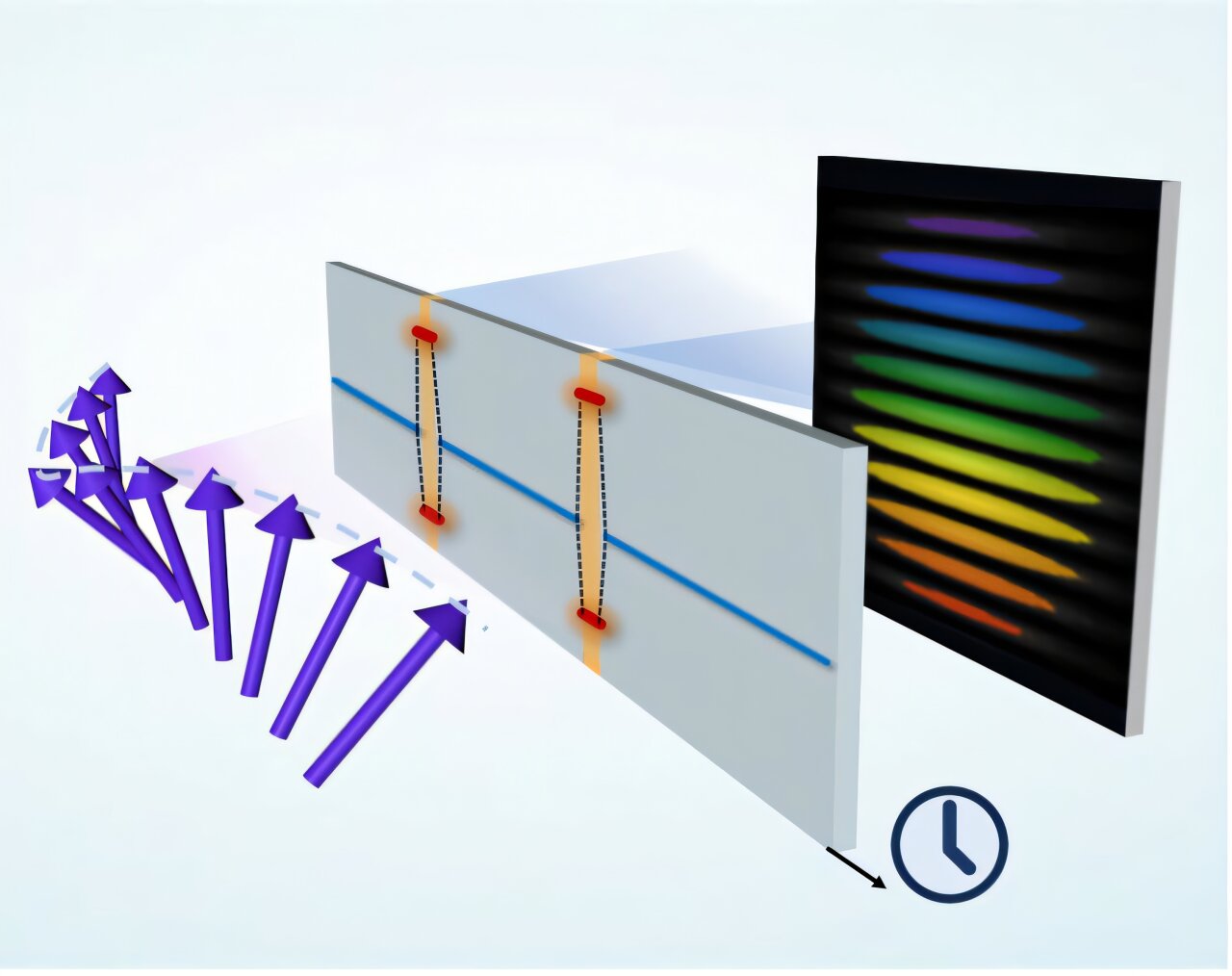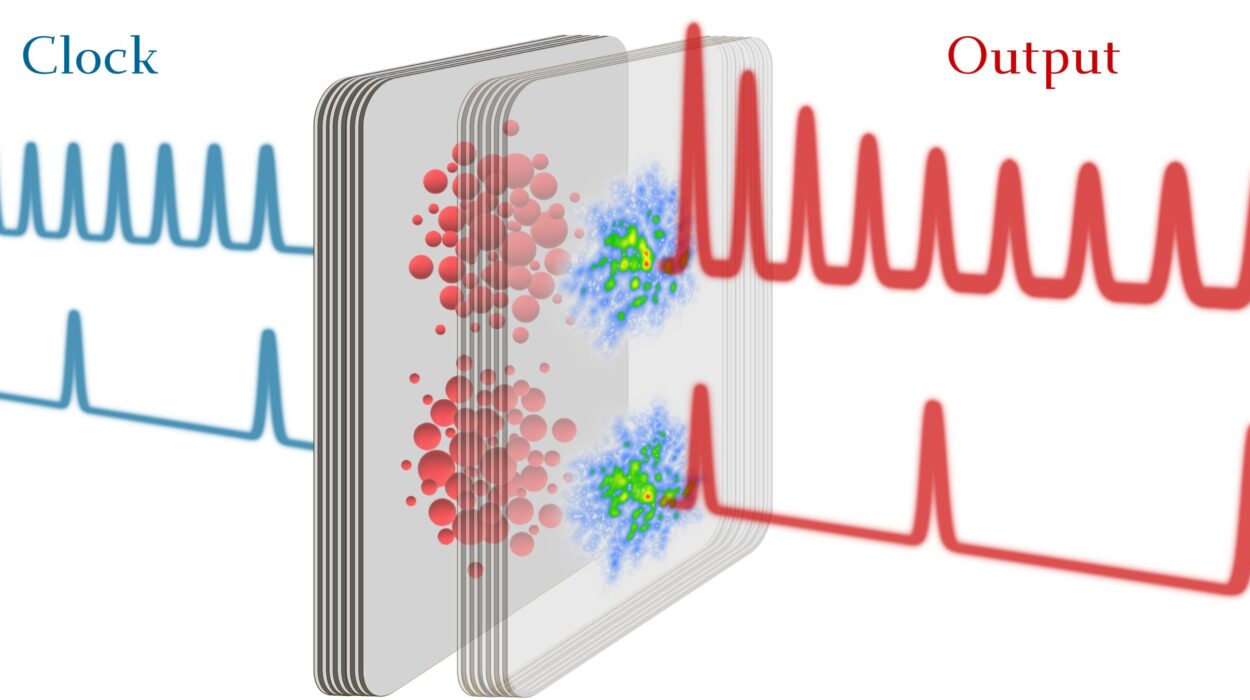There are moments in science when researchers step into territory that feels almost poetic—when they are not just bending the laws of nature but reshaping our perception of what “time” itself can do. One such frontier is the study of time-varying systems: materials whose properties do not remain constant but change over time. Unlike static systems, which behave the same way at every moment, time-varying materials break what physicists call temporal translation symmetry. This breakage opens the door to phenomena so strange and beautiful they sound like science fiction: time reflection, time refraction, and even time diffraction.
These effects mean that waves—whether light, sound, or spin waves—can encounter sudden “time interfaces” that reshape them in ways analogous to how spatial structures bend and split beams. For decades, scientists have imagined what could be possible if time could be manipulated as easily as space. Today, those imaginings are beginning to take experimental form.
Light, Time, and Beyond
Most of the pioneering experiments in time-varying systems have focused on light. Optical systems are relatively accessible platforms for probing temporal symmetry-breaking. By dynamically altering a material’s optical properties, researchers can bend, reflect, and diffract light across the time dimension itself. This is revolutionary because it suggests that we can move beyond conventional optics—beyond the lenses, prisms, and mirrors that work only in space—towards devices that sculpt the very temporal profile of a wave.
But light is not the only candidate. Recently, physicists have turned their attention to magnons—the collective wave-like excitations of electron spins in magnetic materials. These spin waves promise an alternative medium for time-varying exploration, and they carry a particular allure: they can transport information with extremely low energy loss. In an era where computing efficiency is paramount, magnons represent a new form of currency, a way to process signals while consuming far less power than conventional electronics.
A New Approach in Magnonic Systems
This is where the groundbreaking work of researchers at ShanghaiTech University, Shandong University, the Shanghai Institute of Technical Physics, the Chinese Academy of Sciences, and Zhejiang University comes in. Their ambition was bold: to experimentally realize time-varying strong coupling in a magnonic system. In simpler terms, they wanted to create a platform where magnons—spin waves in magnetic materials—could be manipulated through rapidly changing temporal dynamics, much like how light can be bent and shaped in optical time-varying systems.
The team’s innovation lay in the use of a technique called time-resolved frequency-comb spectroscopy, or trFCS. Imagine trying to capture an event that happens in billionths of a second. Conventional measurement tools simply can’t keep up. The trFCS method, however, slices time with the precision needed to observe nanosecond-scale dynamics, allowing researchers to peer into ultrafast processes that were once invisible.
The Birth of a Pump-Induced Magnon Mode
The story actually begins in 2023, when the same team discovered something unexpected: a pump-induced magnon mode, or PIM. Unlike typical magnon modes, the PIM was sensitive to microwave fields so weak they were nearly ghostlike—about ten thousand times weaker than Earth’s own magnetic field. This sensitivity hinted at extraordinary possibilities.
What if, instead of applying a continuous drive, they excited the system with pulses? Pulses, after all, carry edges, beginnings and ends. At those edges, abrupt temporal changes could occur, forming sharp time interfaces. Driven by this question, the researchers replaced steady microwaves with carefully crafted bursts. The result was astonishing: chirped, Rabi-like oscillations that revealed time-varying strong coupling between magnon modes. In effect, they had transformed a magnetic chip into a medium where time itself was a tool for control.
Breaking Temporal Symmetry
The central objective of this research was to break temporal symmetry in a chip-based magnonic system. Breaking symmetry often unlocks new physical behavior, and here it was no different. By creating time-dependent strong coupling between magnon modes on a coplanar waveguide, the researchers managed to open new dimensions of manipulation.
In this setup, a ferrimagnet—a material where atomic magnetic moments oppose one another yet retain a net magnetization—was placed on a waveguide. Periodic microwave pump pulses then excited the magnon modes in the ferrimagnet. At the rising and falling edges of these pulses, the pump-induced magnon mode briefly flared into existence, altering the coupling strength between magnon modes. These fleeting dynamics created the conditions for observing “time interfaces,” the temporal equivalent of spatial boundaries where waves reflect or refract.
Capturing the Nanosecond World
One of the greatest challenges was measurement. The frequency variation of magnon modes happens at nanosecond scales, far faster than commercial analyzers can track. Here the trFCS technique became essential. By using a frequency comb—an array of discrete, evenly spaced frequencies—the researchers could simultaneously probe the response of magnon modes across a broad spectrum. This was like illuminating a hidden landscape not with a single flashlight, but with an entire array of beams shining at once.
Through this method, the team detected rapid shifts in magnon dispersion with exquisite precision. They could now see the very fabric of time-varying interactions unfold.
Time Slits and Temporal Diffraction
To push the concept further, the researchers created “time slits.” In traditional optics, slits allow light waves to diffract, producing interference patterns. In the temporal domain, sharp on–off modulations of the pump pulses produced analogous effects. A single short pulse created two adjacent time interfaces: a time slit. Two pulses created a double time slit.
What happened next mirrored one of the most famous experiments in physics—the Young’s double-slit experiment—but in time instead of space. The spectrum revealed sidebands, equally spaced features whose separation was inversely proportional to the time between slits. This was time diffraction, observed directly in a magnonic system. For the first time, physicists had experimentally demonstrated the double-slit diffraction of magnons in the time domain.
A Glimpse of the Future
The implications of this work ripple outward. By proving that time-varying strong coupling can be realized in chip-based magnonic systems, the researchers have opened a new field of possibility. This approach bypasses the usual difficulty of modulating magnon dispersion at ultrafast speeds, making temporal manipulation practical in systems designed for real-world applications.
What could this mean in practice? Imagine efficient magnon multiplication, programmable spin-wave control, and new forms of low-loss computing. Time-varying magnonics could serve as the backbone of next-generation microwave devices, all-magnetic mixers, and on-chip GHz sources. Even more tantalizing is the potential for integration into quantum hybrid systems, where the ability to control magnons with temporal precision could revolutionize information transfer and storage.
The Beauty of Temporal Engineering
Beyond the practical, there is something deeply poetic in this work. We are used to thinking of time as a backdrop, a silent and immutable flow against which events play out. Yet here, time becomes a medium to be engineered, a dimension to be sculpted. Just as optics transformed our relationship with space, time-varying physics invites us to transform our relationship with temporality itself.
The researchers at ShanghaiTech and their collaborators are not merely tinkering with magnetic chips. They are reminding us that reality has layers we have not yet touched, that time is not only something to endure but something to explore. In doing so, they have taken a step toward technologies that may feel almost magical today but could define the physics of tomorrow.
Toward a New Era of Wave Control
As the team continues its journey, their plans are ambitious. They aim to shorten the time slits and pulses to capture even faster phenomena such as temporal refraction and higher-order diffraction. They dream of integrating multi-slit strong coupling systems into chips, creating something akin to grating-programmed magnonics. Such advances would move temporal wave control from the lab into the realm of practical devices, powering technologies yet to be imagined.
The larger lesson is that physics is never static. Just when we think we have reached the limits, we discover new symmetries to break, new dimensions to manipulate. Time-varying systems remind us that even the most fundamental aspects of our universe—time itself—are not fixed but dynamic, malleable, and filled with hidden potential.
In this light, the future of physics looks not only bright but alive with motion. Waves may not only bend in space but dance in time, and with them, our understanding of reality will continue to unfold in directions both unexpected and extraordinary.
More information: Jinwei Rao et al, Time-Varying Strong Coupling and the Induced Time Diffraction of Magnon Modes, Physical Review Letters (2025). DOI: 10.1103/jc1c-k3ll. On arXiv: DOI: 10.48550/arxiv.2411.06801






